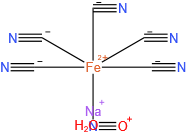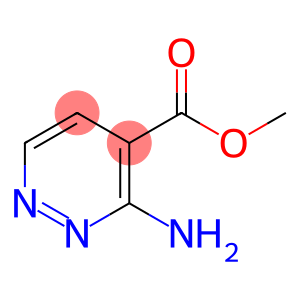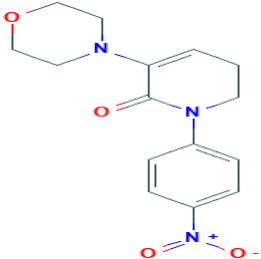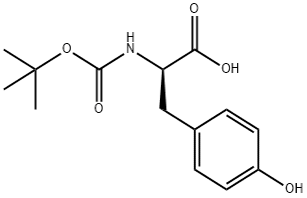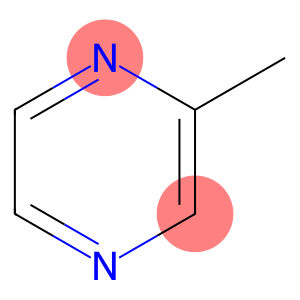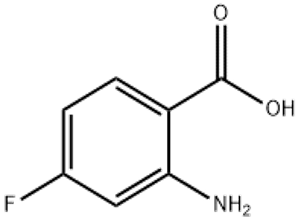Sodium nitroprusside dihydrate (CAS# 13755-38-9)
Risk and Safety
| Risk Codes | R25 – Toxic if swallowed R26/27/28 – Very toxic by inhalation, in contact with skin and if swallowed. |
| Safety Description | S45 – In case of accident or if you feel unwell, seek medical advice immediately (show the label whenever possible.) S36/37/39 – Wear suitable protective clothing, gloves and eye/face protection. S22 – Do not breathe dust. |
| UN IDs | UN 3288 6.1/PG 3 |
| WGK Germany | 3 |
| RTECS | LJ8925000 |
| FLUKA BRAND F CODES | 3 |
| TSCA | Yes |
| HS Code | 28372000 |
| Hazard Class | 6.1 |
| Packing Group | III |
| Toxicity | LD50 orally in Rabbit: 99 mg/kg |
13755-38-9 - Reference
| Reference
Show more
|
1. Tian, Ya-qin, et al. “Comparison of different extraction techniques and optimization of the microwave-assisted extrac… |
13755-38-9 - Introduction
Soluble in water, slightly soluble in alcohol. Its aqueous solution is unstable and can gradually decompose and turn green.
13755-38-9 - Reference Information
| introduction | sodium nitroprusside (molecular formula: Na2[Fe(CN)5NO]· 2H2O, chemical name: sodium nitroferricyanide dihydrate) is a quick-acting and short-acting vasodilator, which is clinically used for emergency hypertension such as hypertensive crisis, hypertensive encephalopathy, malignant hypertension, paroxysmal hypertension before and after pheochromocytoma surgery, etc, it can also be used for controlled hypotension during surgical anesthesia. |
| effect | sodium nitroprusside is a powerful quick-acting vasodilator, which has a direct dilation effect on arterial and venous smooth muscle, and reduces peripheral vascular resistance by dilating blood vessels., Produce antihypertensive effect. Vascular dilation can also reduce the load before and after the heart, improve cardiac output, and reduce blood reflux when the valve is not closed, so that the symptoms of heart failure can be relieved. |
| indications | 1. it is used for emergency hypotension of hypertensive emergencies, such as hypertensive crisis, hypertensive encephalopathy, malignant hypertension, paroxysmal hypertension before and after pheochromocytoma surgery, and can also be used for controlled hypotension during surgical anesthesia. 2. For acute heart failure, including acute pulmonary edema. It is also used for acute heart failure in acute myocardial infarction or when the valve (mitral or aortic valve) is not closed. |
| pharmacokinetics | reach the peak blood concentration immediately after intravenous drip, and its level depends on the dose. This product is metabolized by red blood cells into cyanide, cyanide in the liver is metabolized into thiocyanate, and the metabolite has no vasodilating activity; cyanide can also participate in the metabolism of vitamin B12. This product works almost immediately after administration and reaches the peak of action, and maintains for 1~10 minutes after intravenous drip stops. The half-life of patients with normal renal function is 7 days (measured by thiocyanate), prolonged when renal function is poor or blood sodium is too low, and it is excreted by the kidney. |
| A synthetic process for preparing | sodium nitroprusside, including the following steps: 1) Synthesizing copper nitroso ferrocyanide: adding an appropriate amount of purified water to dissolve potassium nitroso-ferricyanide in a crystallization tank, heating to 70-80 ℃ to completely dissolve it, and slowly adding copper sulfate pentahydrate aqueous solution dropwise, after the reaction is kept warm for 30 minutes, centrifuge, the centrifuged filter cake (copper nitroso ferricyanide) was put into the crystallization tank. 2) Synthetic sodium nitroprusside (sodium nitronitroferricyanide): Prepare saturated sodium bicarbonate aqueous solution according to the feed ratio, and slowly drop it into nitroso ferricyanide at 30–60 degrees C. After the reaction, centrifuge, collect filtrate and lotion. 3) Concentration and crystallization: The collected filtrate and lotion are pumped to a vacuum concentration tank, and glacial acetic acid is slowly added dropwise until no bubbles are generated. Turn on the vacuum pump and heat up to 40-60 degrees C, start concentration, concentrate to a large number of crystals precipitation, close the steam valve, vacuum valve to prepare for crystallization. 4) Centrifugal drying: after crystallization, the supernatant is removed, the crystals are evenly stirred and centrifuged, the filter cake is placed in a stainless steel plate, and the product is obtained by vacuum drying. |
| biological activity | Sodium Nitroprusside is a powerful vasodilator that works by spontaneously releasing NO in the blood. |
| Target | Value |
| Use | Used as a reagent for the determination of aldehydes, ketones, sulfides, zinc, sulfur dioxide, etc. Used as a reagent for the determination of aldehydes, acetone, sulfur dioxide, zinc, Alkali metals, sulfides, etc. Vasodilators. Verification of aldehydes and ketones, zinc, sulfur dioxide and alkali metal sulfides. Chromatic analysis, urine test. |
Write your message here and send it to us


